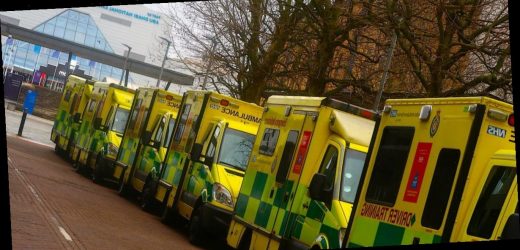- The UK government is scrambling to handle a huge increase in coronavirus cases, with pressure on Prime Minister Boris Johnson to impose a national lockdown.
- A preliminary study said the new variant of the virus first identified in the UK has a "substantial transmission advantage," giving weight to earlier fears that it is more infectious.
- One testing center found the new variant dominates its recent results.
- An epidemiologist explained why a more contagious virus could pose a greater danger than a more deadly one, by spreading much more quickly and thus killing more people.
- Visit Business Insider's homepage for more stories.
Infections from the new UK variant of coronavirus surged over the holiday period, pushing Britain's NHS hospitals beyond their capacity to handle patients. Teaching union officials also called for schools to be closed.
A new analysis showed that the more transmissible variant of the virus could potentially cause hundreds more deaths per 10,000 patients.
A preliminary study from Imperial College, London, released last week found that the new variant, known as B.1.1.7, is significantly more transmissible, adding weight to earlier government fears.
Scientists had previously been hesitant to confirm early indications of this. The new study is a "pre-print," meaning that it has not been peer-reviewed. But the authors wrote: "There is a consensus among all analyses that the [new variant] has a substantial transmission advantage."
The study said that B.1.1.7 can add between 0.4 to 0.7 to the existing R number — the rate at which the virus reproduces. The R number needs to go below 1 for cases to drop. The UK's current estimated R number is between 1.1 to 1.3.
The variant now forms the vast majority of all coronavirus cases in the UK.
The Milton Keynes Lighthouse Laboratory, a testing center in the south-east of England, found that by December 18, B1.1.7 had begun to dominate in its results, as this tweet from CEO Tony Cox shows:
The new variant can potentially kill more people than the old one
B.1.1.7 is not currently considered to be any more deadly for any individual patient than the originally observed virus. But epidemiologists are warning that because it reaches many more people, the total number of deaths it will cause could be far higher than earlier variants.
Adam Kucharski, an associate professor at the London School of Hygiene & Tropical Medicine, explained the potential problem in a series of tweets:
He compared the effects of two hypothetical variants: one 50% more deadly, and the other 50% more transmissible.
In the first instance, he calculated that a 50% more deadly virus during a period with an R number of 1.1 would see 198 deaths per 10,000 infections after a month.
But were that variant to be 50% easier to transmit, the same time period would see 978 new deaths per 10,000 infections.
"The key message: an increase in something that grows exponentially (i.e. transmission) can have far more effect than the same proportional increase in something that just scales an outcome (i.e. severity)," he wrote.
The new variant has thrived despite a lockdown
The authors of the new study from Imperial noted that the new variant of coronavirus was increasing despite the government's imposition of "Tier 3" and "Tier 4" level lockdowns in England. "These higher infection levels took place despite the high levels of social distancing in England," the authors said
A lockdown starting in November saw the R number drop to 0.9. But those measures weren't ultimately enough to curb the spread of the new variant, The Times of London reported Axel Gandy, chairman of statistics at Imperial College, as saying.
Under those conditions, non-essential stores closed, people worked from home where possible, but schools remained open.
Overall, COVID-19 case numbers in the UK have rocketed:
- On Sunday, the country reported just over 55,000 cases in a single day — a higher level than ever recorded in the April first wave, although this is partially due to increased testing, The Guardian reported.
- Southern England and London are the worst-affected areas, with some London hospitals reporting "major incidents" and low oxygen supplies.
- London's Nightingale hospital — one of the overflow facilities set up but rarely used in the first wave — is set to reopen, London's Evening Standard newspaper reported.
- Prime Minister Boris Johnson, who has long resisted calls for a national lockdown, is under pressure to do so and is meeting senior government members on Monday.
- The National Education Union urged teachers not to go to work Monday, prompting many elementary schools to cancel classes. High schools are already closed until at least mid-month.
The number of reported cases spiked quickly after Christmas, which was to be expected given the holiday lull:
Patients in hospital have now exceeded the April peak:
Deaths began spiking upward shortly after Christmas:
If you have a story about the coronavirus pandemic you’d like to share, email us at [email protected].
Get the latest coronavirus business & economic impact analysis from Business Insider Intelligence on how COVID-19 is affecting industries.
Source: Read Full Article

